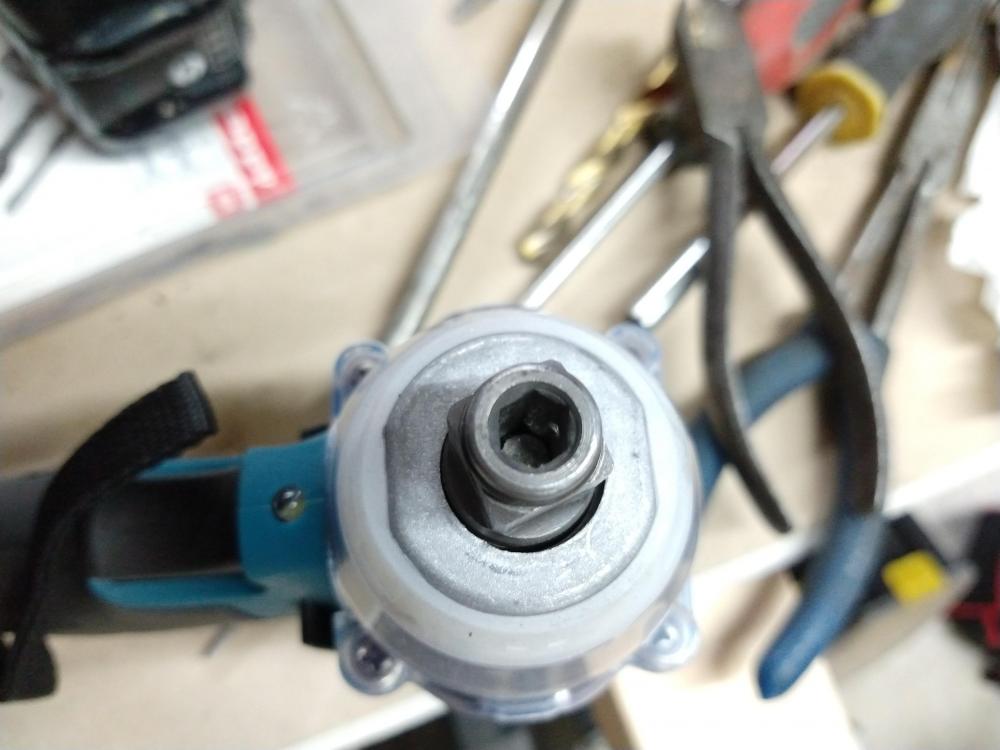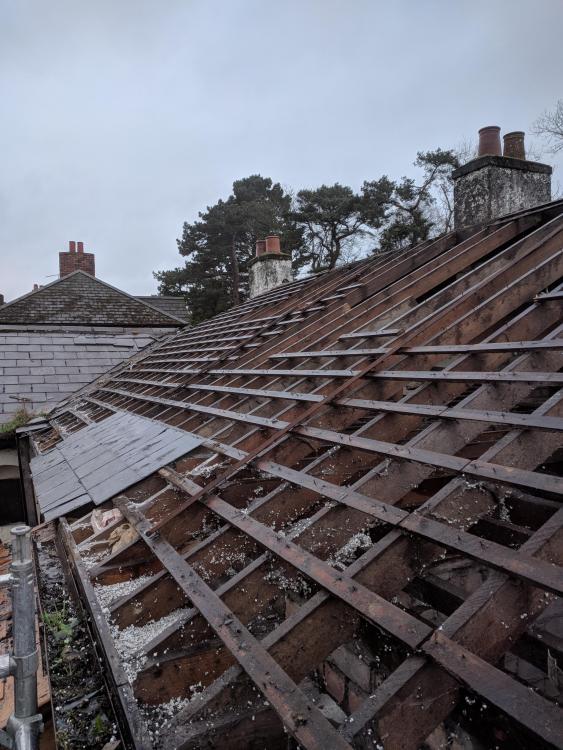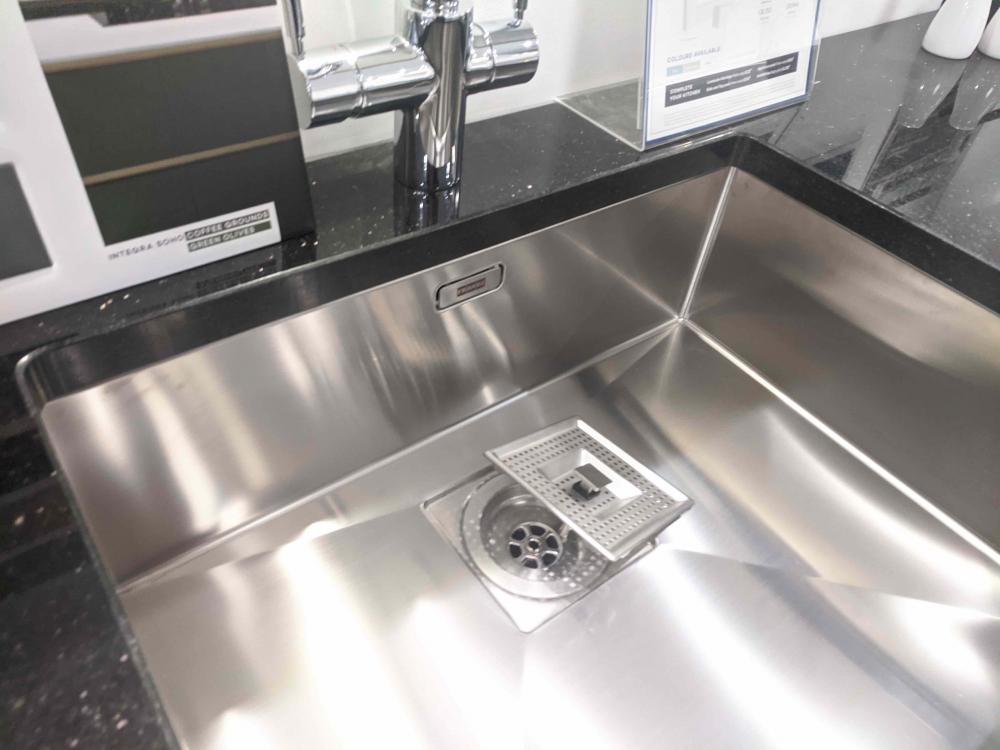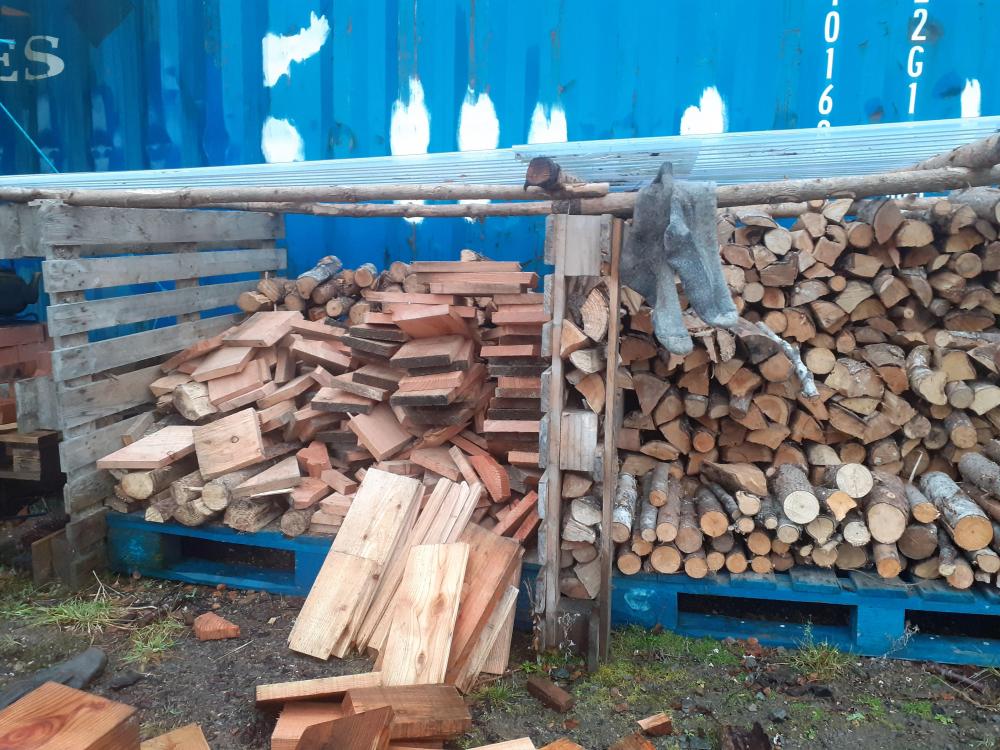Leaderboard
Popular Content
Showing content with the highest reputation on 01/02/20 in all areas
-
The simple answer is to just design the house to give you the specific temperature you want in the bedrooms and the specific temperature you want in the living areas in the house, if these are different. Ours does this; like you, we don't like warm bedrooms at all. We have no heating at all in the bedrooms, and they typically sit at around 18 to 19°C for most of the year, whilst the rooms downstairs sit at around 21.5° to 22°C. I increased the fresh air flow rate from the MVHR to the bedrooms to ensure that they stay a bit cooler than the rest of the house, and increased the thickness of the acoustic insulation in the ground floor ceiling (acoustic insulation also works well as thermal insulation). This works very well for almost all of the year, except in very hot weather, where after a few days of high outside temperatures the bedrooms do get up to an uncomfortable level (for us) of maybe 22°C or more. I fixed this last summer by adding a small air conditioning unit upstairs, that is very effective at lowering the bedroom temperature in very hot weather. It doesn't get used a lot, but we feel it's worth it. Had we been staying in our old house I'd have done the same, as that used to overheat badly in hot weather, and my fix there was to use a portable air con unit. OK, but noisy, and because the house thermal time constant was short, it needed to be on all the time in hot weather. The air con we have now only needs to be on for a few hours during the day and the long thermal time constant means the bedroom stays cool overnight and well into the next morning with it turned off.2 points
-
One advantage of the autopilot sensors is that the forward looking radar will usually "see" things a fair bit before the driver does. I suspect that auto dip is just using the same autopilot sensing systems as used to detect and classify other vehicles, cyclists, pedestrians, road markings etc. It has a big advantage over us mere humans, in that it can "see" stuff that we can't, plus it looks all around the car all the time, so knows how close the car is to the edge of the road, how close it is to the centre white line, etc, as well as detecting things way off in the distance. This is an old video, showing how the sensing systems inside the car "see" things (this isn't displayed to the driver). Things have markedly improved in the past year, since this video was released, but it does give an idea as to what is being detected and classified by the car all the time. The impressive thing is just how many features the car simultaneously manages to detect and track:1 point
-
1 point
-
The few times I've had to use a plunger, I always push down slowly to evacuate the bellows, then with the tap running to create a good deal against the sink bowl, I pull up with a sharp swift movement. This way you are doing two things, trying to un-consolidate the material from the direction it accumulated and most importantly, pulling all the joints in the system together, rather than forcing them apart. Sometimes the amount or crud that comes out into the bowl is encouraging and can be collected before it goes back into the pipes if you're quick.1 point
-
I am also in a windy location and mounted the vents in the north wall under the eaves, some trees to the North and winds from that direction rare. I am yet to balance the system, we have no heating upstairs apart from towel rads in the bathrooms and not over warm (19’) but comfortable fir sleeping. I prefer to use an electric blanket and decent tog duvet in the cold weather.1 point
-
Interesting to see how this particular debate has unfolded. Are electric vehicles that green? From the perspective of zero emissions at point of use, yes. Assume that the power for those cars is derived from 100% renewable or emission free sources, yes. Assume that all of the vehicle and its constituent parts can be recycled and reused, yes. But there's a problem with the key component in an EV, i.e. the batteries and what they are made of: Lithium production. From everything I've read, it's a hugely damaging (to the environment) process, but because it's out of sight, no-one really cares. In 20 years, I suspect we'll be told, just as we have with Diesel, that we are killing the planet and things have to change. And then there's Cobalt. Kids in the DRC digging up with their bare hands, and little to no environmental protection? Takes the shine of EV's IMHO. Reference was made earlier to patents of key battery technology being sat on. If we truly are at a tipping point in terms of the future of the planet, maybe governments need to seriously look at this, and remove patent protection if the holders fail to licence out or develop the tech themselves. We are prepared to compulsory purchase land to build a road or railway against the wishes of the owner, so why not patents on tech that could improve (or save) our world?1 point
-
So in a single pedal EV with cruise control working, in an emergency you would have to blip the pedal to cancel cruise control and then do nothing and hope it stops in time. I hope they'll come up with something better than that!!!1 point
-
Still does not explain how CO2 causes warming, just the effects increasing it has. Though it is good to see that he myth busts the greenhouse analogy.1 point
-
I think the new Honda EV coming out this year has only one pedal, so that will be interesting. I also wondered how easy it would be to get used to braking without a brake pedal to hit in an emergency.1 point
-
@OnoffMine was item number 392519282059 but they've since put postage charge on it. No way is it 520N/M. I did just manage to undo some wheels that are untouched for 5 years on a car that has not been used in the same time, but it sat and bounced for a good time first. @Jeremy HarrisYes it does have 1/4 hex drive in the end, which might be most of what I end up using it for1 point
-
A *tiny* benefit of GSHP is they can provide summer cooling without having to go through planning permission. If you're making planning application anyway I guess you include the aircon external units now anyway, which removes that benefit Installing the collector pipes is the most expensive part (doubly so if piled in, which I think they'd have to be in your plot), and I'd worry that they'd either sit there unused and forgotten after selling up, or even worse you eventually come to use them, and the installer/manufacturer refuses to use/warranty their use because they fail to meet the $random standard of the day that doesn't even exist today or something like that. So I'd either install pipes now fully intending to use them right away, or just not bother.1 point
-
Progress so far. Rain stopped play today. I'm getting about half a roof side done per day. Doing it as a mix between inside the roof for the higher rows and climbing on the sarking for lower rows. Letting them slide down into a high sides pallet on the telehandler. Recovering more than half the slates. Hope it's worth it!1 point
-
Mine won't work on all pallets especially like some of the close boarded ones. It's meant really just to go over the 2" width where the cross bearers are say 3 or 4x2. This type has merit: https://www.machinemart.co.uk/p/roughneck-64-644-pallet-buster/? Should work on all types for instance even where the bearers, second layer down are 4x1 width ways. Note though mine articulates and the angle irons spread the load so you lift two nails at once so less chance of splitting the wood. I'll make a universal one one day with quick release pins!1 point
-
Yes, elegantly simple. Just complete bullshit.1 point
-
Pallets on the ground are just inviting vermin imo. The one I did with my nephew a while back: Concrete base, sole plate to match pallet width: You can see here how the width of the pallet matches the width of the sole plate (bottom left): Using the same size pallets helps but isn't essential. Pallets can be shortened and modded such as for the door way: You just butt them up and screw through. Blocks of scrap timber dropped in between the pallet get screwed from the side and down from the top into the sole plate. Same at the top of the pallet wall for a wall plate. Cladding was waste from a lumber mill:1 point
-
If the planet warms meaningfully it swings it in favour of ASHP (partly or even completely eliminates the need for defrosting in cold weather) If GSHP's become more efficient, then so too will ASHP's in all probability, but you would need to buy a new one to get that increase in efficiency. If you want to install a GSHP later it will trash a large part of your garden. Install collector pipes now even if you don't use them, just in case?1 point
-
The good news acoustically is that there is no massive noise in the low frequency region (<200 Hz), as the lower freq you go the harder it is to mitigate, though i don't know how the android phone captured this information, and any filter applied to it, as that roll off below 100Hz looks suspicious and there may be missing data there is it an MP3 file? if it is better analysis can be carried out from a wav file of the recording, though still limited by the frequency range of your phones microphone. The first 'peak' in noise is just over 200 Hz, and this peak is the blade pass frequency and will be related to the rpm (this should be stated on the plate on the machine) and number of blades in the fan. E.g if there are 12 fans and it runs at 1,000rpm, the blade pass frequency would be 200 Hz (close to where your first peak is). What is of note in these measurements is the blade pass frequency is not the dominant noise, and the peaks at ~480Hz, 600Hz, 750Hz, 1000Hz, and 1600Hz are circa 10 dB louder (even more so than the 200Hz tone once A-weighting is applied, if it hasn't been already), though don't follow a harmonic relationship. The character of these peaks make me think that its not the main fan blades that is the issue, and its more likely to be noise from a gear box / bearings and the like. can you up load the audio file? Whatever it is/ they are its something that is occurring at a faster rate than the main fan blades. Any photos inside the fan housing, any way of checking the condition of the bearings and excessive play? Can you do similar noise measurements in the house that the complaints are occurring, as this will show which frequencies are the ones getting to the house and any ones that dominate inside.1 point
-
1 point
-
Hybrids are exempt from emissions testing. There is a way to force hybrids into emissions test mode, via CAN bus commands sent via the OBDII port, but MOT testers aren't permitted to do this. Brake light testing is OK, as the brake lights also work when the brake pedal is pressed, as well as when regenerative braking is slowing the car.1 point
-
The snag is that ANR on this sort of scale is very, very expensive. It can be done, but it needs a lot of power, weatherproof speakers etc, and a passive solution will almost certainly be cheaper and easier to implement. ANR also only tends to work over a very small area, so works brilliantly in headphones, sort of OK inside a small, enclosed area (like inside an aircraft cockpit, for example) but really doesn't work at all well in the open air. The fan room looks to have lots of hard surfaces, crinkly tin etc, so adding sound absorbent panelling would probably make a significant difference. If the sound can be absorbed at source, in that room, then that seems to be far and away the best way of dealing with it. Clearly some sound absorbent panel solutions aren't going to be an option, because of the possible fire risk, but there are fire resistant acoustic panel materials that may well work OK. I once spent a day at Bicester, at the Challenger tank engine test facility, and the engine test cells there were lined with rigid board full of small holes. The noise inside the test cell with that big V12 diesel running at full chat was deafening, yet in the control area outside it was barely audible. Might be worth looking at how engine test cells are built and then seeing if a similar box of rigid acoustic board could be built around the drier, allowing enough room for access. If it would be possible to build a concrete block wall around the drier, with the inside lined with acoustic board, then this might well be even better. My guess is that 99% of the noise will be coming from the tips of the fan blades, plus a bit coming from the air flow itself. I doubt the motor contributes much to the overall noise, TBH.1 point
-
The brake lights are controlled by car deceleration, so seem to come on at a set deceleration rate. In the i3 I never knew when this was, as there was no indication inside the car that the brake lights were coming on, the only clue was to look in the mirror at night and see if you could spot their reflection. The Tesla has an image of your car (right down to the correct colour, wheel type etc for your actual car) to the right of the screen, and this shows both the front and rear lights, and shows pools of light cast by the headlights on the virtual road around the image. When the brake lights activate, they show in this image of the car. In typical Tesla fashion, they also use the weather data for your location to make sure that the reflections shown in the virtual car glass roof and screens are right, so there will be clouds moving over it on cloudy days, an apparent reflection of the sun on sunny days, and stars showing on a clear night...1 point
-
I see no one has replied or commented on my suggestion of reverse phase soution If you want to prove it works -get your stereo speakers change polarity on one and face speakers towards each other ,then move them closer together and sound will get less right up tight noise sound is virtually elimianted -- waves cancel each other out you just need a micto and amp pick up noise source -then play it back at the sound source in reverse polarity speakers1 point
-
Our stainless sink is made by Bacofoil from one of the diy sheds ?. Not only does it sound like Rolf Harris's wobble board but it stains easily too. Told SWMBO we should buy a Franke one but I was overruled.1 point
-
Who can forget Judith Hann, on Tomorrow's World, picking up a red hot heat-shield tile from the early days of the space shuttle - I don't know what the material was, but it was such a poor thermal conductor that the heat therein didn't get transmitted to her hand.1 point
-
You are going far too deep trying to explain photon impacts and molecular resonance to the man on the Clapham omnibus. Just explain it this way: Planet earth is like a cold blooded lizard which generates negligible internal heat. Only the sun really warms the earth but just above the earth's lizard skin the temperature of outer space is more than 200 degrees below freezing. Fortunately the earth has a few thin duvet covers called the atmosphere. The thickest duvet is water vapour and this is topped up with the CO2 and Methane duvets. For the past 2 million years the earth was a chilly place where ice ages are the norm. Human civilization has florished over the past 10,000 years during a brief inter glacial warm period triggered when the earth wandered a bit closer to the sun and warmed a tad ending the last ice age. Scientists are a little puzzled as to why the earth has not started to cool as we are due to fall into a new ice age. The halt in the typical temperature drop into the next ice age seemed to coincide with humans inventing agriculture which increased the thickness of the methane duvet. Despite being warmed a little by the thicker methane duvet the earth has been cooling for a few thousand years just slower than expected. With the earth's climate teetering at the edge of the next ice age mankind invented the industrial revolution and over the last 200 years the tog value of the thin CO2 duvet has increased by 30% and halted the downward temperature decline into the next ice age. This is fortunate because it will buy humans a few extra thousand years to work out how to manage the climate to prevent the next ice age. If the earth lapsed into a new ice age billions of humans would die.1 point
-
We have one stainless steel sink and one white Silestone sink. The Silestone sink stains easily and has to be cleaned with Barkeeper's Friend. I probably wouldn't get one again. We changed from 1.5 bowl sinks in the last house to single larger sinks. One thing was I wanted to get a whole oven tray or BBQ grill in the sink, previously they stuck out the side at an angle so you had to fill the sink right up to steep a flat item. Our SS sink is a Blanco Caron XL 60. We were limited in that it had to fit in a 600mm cabinet. If you do like to fill it to wash stuff in the sink it does take a long time to fill a bit sink. My parents have a very modern sink with very sharp corners and say it is very difficult to clean the corners. Undermounted is so much easier to push water and crumbs into the sink. I would also recommend some kind of flexible tap that allows you to move the water around and a waste disposal. As we don't wash much by hand we don't have a draining area as I noticed in previous house that the grooves in the granite got very dirty. This seems no problem at all, sometime we just put things on the flat surface.1 point
-
1 point
-
We've found that we are now looking at tenths of a degree differences whereas in the old bungalow we were looking at several degrees difference. I think you are right that we are being too fussy but it's surprising how quickly the body adjusts to 'requiring' constant warm temperatures.1 point
-
1 point
-
If I had to bet I would say the one on the right was English not Siberian. I have just given MillWorks a small fortune for cedar and it is absolutely spot on clear, not a knot in it anywhere. I did have samples of larch of them. It really is down to the look you are after, my neighbour has just done a huge barn in English grown Douglas fir and it looks very good are you after rustic or modern, treated or going to let it grey.1 point
-
Hi There, a friend of mine recently built an ICF house from Nudura, the lads building it, kicked out his 1st floor gable wall, by about 15-20mm, meaning the ground floor wall, needed some serious filling in to match...This cost him about 2.5K extra for the render guy. I just threw a stringline on my wall, as the ICF and noticed a good section of it bowing inwards around 20mm, (This is at about 8M in height, I have yet to track down the wall, wish I had learned to use a string line before this) I'll try to work out the area, but is this something you'd hold back money from the builders for? (They're looking to settle up urgently :)) https://youtu.be/96nnzpQ4jG8 Thanks1 point
-
For clarity, while @vivienz is correct re our houses being sheltered, in my case my vents come out of the flat roof which is totally exposed to the prevailing wind. Another observation re benefit of mvhr; nye party of 33 people dancing eating and drinking for 7 hours, detritus left overnight.....following morning wife comments on freshness of atoms’ in house.0 points
-
0 points
-
He has been known to wear clothes .... I mention this because Sam can be a given name to both sexes ?0 points
-
I could if I had a 1/2" female to 3/4" female square adapter, but all I seem to have is a collection of various 1/2", 3/4", 3/8" and 1/4" square adapters, none of which will fit to together easily to allow me to connect the thing to my 3/4" drive torque wrench. The only hex threaded pillars I have are M6, so 10mm AF, and I could possibly try an arrangement of adapters and sockets to get this to work, but it would mean using a 3/8" drive 10mm socket that's seen better days, and which probably wouldn't be up to taking the full torque of this thing. Somewhere I'm sure I have another set of 1/2" sockets, but I'm damned if I know where they are. I seem to be struggling to find loads of stuff since we moved - something that's getting to be extremely annoying. My workshop at the old house may have been a tip, but it was my tip, and I knew pretty much where everything was...0 points
-
0 points
-
Isn't that what nationalised industries did too. Then went on strike every few weeks.0 points
-
0 points
-
The Anni-Frid Lyngstad of science, as opposes to Maggie Philbin, who was the Agnetha Fältskog.0 points
-
0 points
















